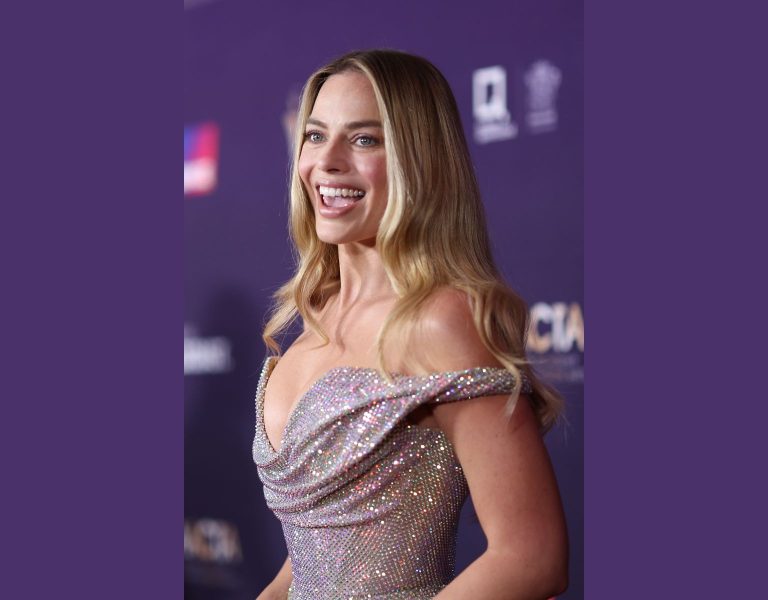Her way or the highway
Find out how Oli Russell, Catherine Goldschmidt BSC and director Ben Taylor fused history and magic to bring Sally Wainwright’s genre-bending story to the screen.
Disney+’s Renegade Nell marks a bold departure from Happy Valley for its creator, Sally Wainwright, but her new show is a riotous ride from start to end. Set in 18th-century England, this rip-roaring adventure follows the titular Nell (Louisa Harland), a highwaywoman with superpowers, as she confronts a plot against the Queen of England.
Cinematographers Oli Russell (block one and three) and Catherine Goldschmidt BSC (block two), along with block one director Ben Taylor, reflect on the making of this fast and furious show.
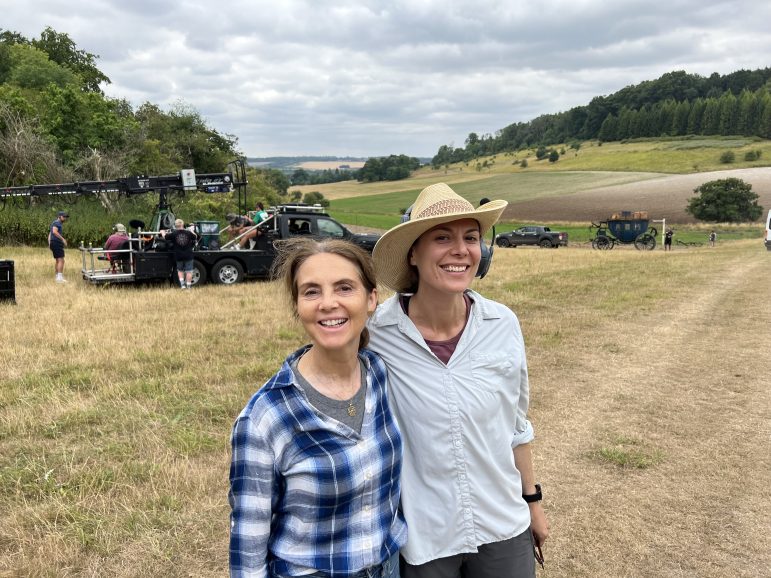
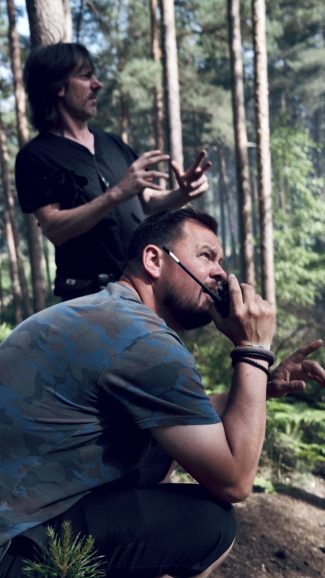
British Cinematographer (BC): How did you get involved with Renegade Nell?
Oli Russell (OR): I was approached by Ben Taylor, block one director, and Jon Jennings, series producer.
Catherine Goldschmidt BSC (CG): I interviewed with director Amanda Brotchie and we hit it off. I remember we talked a lot in that first interview about grounding the fantasy of the script in the reality of the historical period, which is something I had just been doing a lot of on House of the Dragon. My second interview was with the whole team including creator/showrunner Sally Wainwright and producers Jon Jennings and Stella Merz. And then they offered me the job!
BC: Ben, when you read the script for Renegade Nell, what was your initial impression? What made it stand out from other period dramas?
Ben Taylor (BT): Having spent the previous four years happily in school halls of Sex Education I was looking for something new and challenging, a project that would take me out of my comfort zone. Nell was all this and then some. It was like nothing I’d read before; anarchic, bold, ambitious, violent, dark, funny – an opportunity to do something totally new in this country within this space. As the Americans like to say, it was an irresistible sandbox to play in.
It was a departure for Sally in terms of genre too but her characters and voice – which I’m a huge fan of – clearly shone through. It was a period drama by setting alone, it felt really fresh and the character of Nell entirely modern but never anachronistically so.
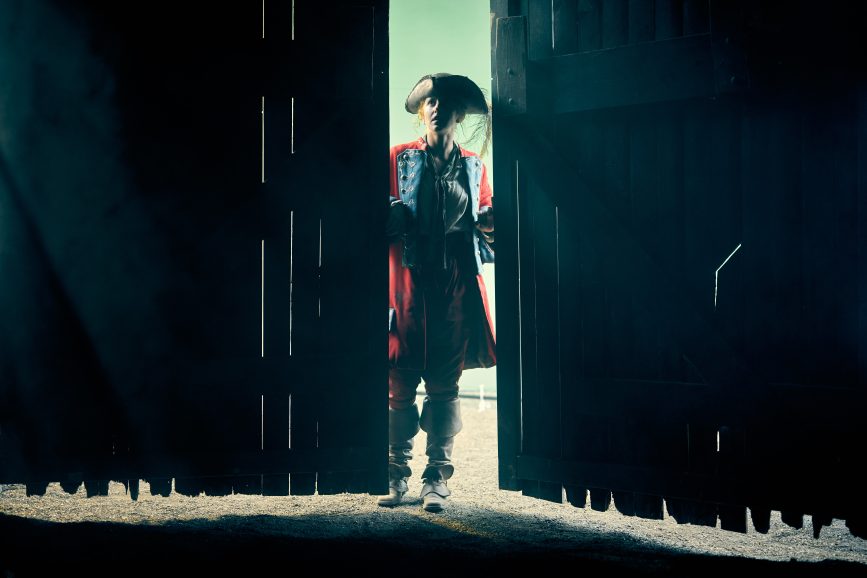
BC: What excited you about the project? Had you worked on many period dramas before?
CG: I had honestly never read anything like these scripts. They were such a unique blend of action, comedy, history, fantasy and the western genre all mixed up into a family-friendly bundle of joy! I personally loved the underlying themes questioning gender and class norms as well. Period drama-wise, I had just come off season one of House of the Dragon which is essentially set in medieval times, but this specific period of Jacobean early-18th-century England was uncharted territory for me.
OR: I have worked on period dramas in the past, but never a period this early. I was sent the first two episodes and I just thought the writing by Sally Wainwright was brilliant. It had soul and feeling and the period setting, combined with fantastical characters and a magical edge, really enticed me.
BC: What was your block director’s initial vision for the look and mood of Renegade Nell and what new perspectives did you bring to discussions? Did you draw on any particular creative references when setting the look?
OR: I don’t think Ben had one particular initial vision for the look and mood of Renegade Nell. However, I think his overview was that he wanted the show to be grounded in reality when it needed to be and wanted to honour a grit and roughness that this time period would have had, whilst embracing the magical characters and the adventures that unfold. This led to us taking quite a naturalistic and motivated approach in terms of lighting in particular, whilst always thinking of ways in which we could improve the magical elements. One of the main objectives was always to make Nell feel special and heroic.
CG: The look and mood of the show had to be just as unique as the scripts themselves. Working with production designer Anna Pritchard and costume designer Tom Pye, we wanted to create a historically accurate world that was still stylised and heightened to match the tone of the fantasy.
Our episode starts with a hilarious scene at Widdicombe Manor, for example, and here we wanted to push the colour further to underline the comedy. We moved the camera a lot to heighten the action beats, and we generally kept the camera movement quite playful and responsive to the characters. I personally love camera movement, as does Amanda, so we had a lot of fun coming up with camera choreography that would best tell the story.
OR: Ben and I also looked at a lot of different visual references. A lot of them initially came from Ben and then I started to add to them. Some of the references included Sleepy Hollow, Pirates of the Caribbean, True Grit, Wonder Woman as well as old paintings. These weren’t specific in terms of overall, we took different elements that we liked from these references to help shape the look and feel of Renegade Nell.
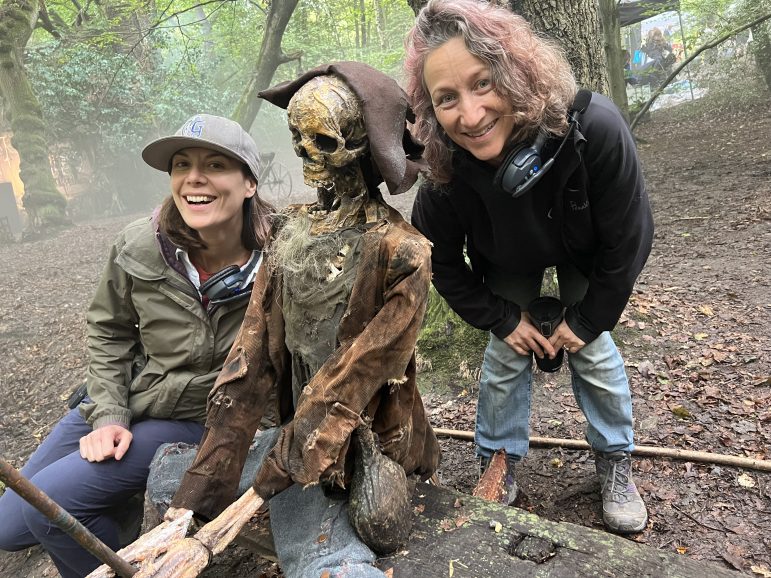
BC: Take us back to prep. How long did you have and what research did you do?
BT: It was a lot of fun to prep and design this with Oli, one of my oldest friends in the business. The ambition was to create a world that would make sense of the tone and genre-bending I mentioned earlier. It needed to be beautiful but dangerous, dirty, real and grounded. This was a world of magic and as a result some major moments of VFX, we wanted a textured, surprising world in which to embed the VFX, rather than clean and convenient. Embracing the gothic horror of the folklore but keeping Disney in its DNA so we didn’t veer the wrong side of our 12A rating.
The script was clearly riffing on the style and structure of a classic western, revenge and road trips, hold ups and gun fights, crying out for big widescreen photography and a camera that moved. So we spent a lot of time watching and picking apart classics but old and modern from The Searchers to the Cohens’ True Grit. Huge inspiration came from the atmosphere and photography of Deakin’s Jesse James, which had a lyrical quality that we felt suited the character of Nell and her sisters.
Obviously there’s limited visual reference of this period of deep British history so we spent some happy days in the National Gallery. The chaos of Hogarth’s depictions of a gin-soaked London were a real help for our designers.
OR: I had about ten weeks of prep and there was a lot to do. We had set builds that had already been designed and lots to work out in terms of how we were going to execute certain sequences. A lot of research went into different elements such as the character Billy Blind as he can change in size, and how we executed that. We also looked into elements that motivate light, as in that period there was only daylight, moonlight and candlelight.
CG: I think I had five or six weeks of prep for a 10-week location-heavy shoot. What I remember doing most in prep was driving all over South-East England looking at locations!
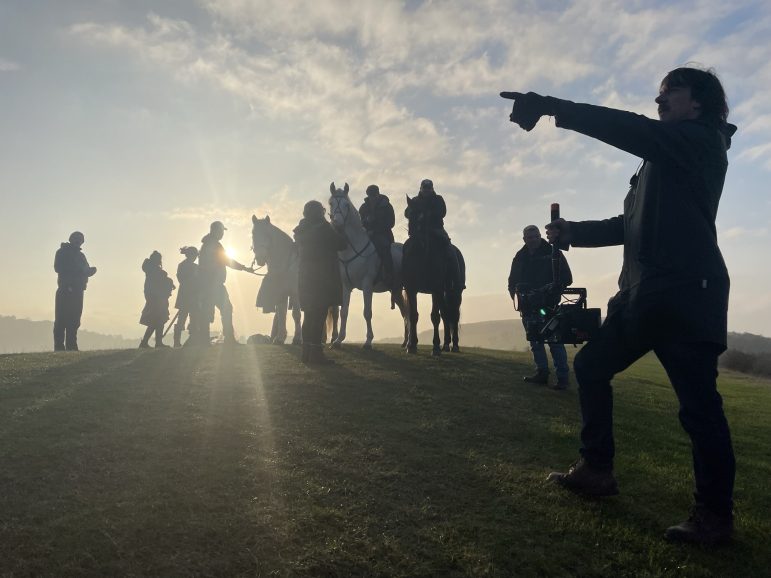
BC: Could you run us briefly through the filming locations in your episodes?
OR: We had a lot of different locations, however some of the main ones were Crowhurst where the Talbot pub is set. We used this as our Tottenham hamlet and built facades to create additional buildings. This was executed brilliantly by Anna Pritchard (production designer) and her team. We also had a lot of woodland where our gang are on the run and also the opening sequence is set. Ben and I walked many miles together during prep through different forests and woods looking for the right spots for different scenes. In the end we settled on Bourne Wood and Windsor Great Park which served as the majority of our woodland scenes. We also shot Broughton Castle as the exterior of Broadwater Hall and Dorney Court for the interior.
CG: There were a great many period houses, many of which had rules about using flame or atmospheric haze or both. The most challenging location on our block from my perspective was shooting in the tunnels at Dover Castle. Sally’s scripts described Newgate Prison as dark, but obviously, there has to be some motivation for some light. In the deepest, darkest parts of Newgate, the motivation for light could only be flame, but unfortunately Dover Castle wouldn’t let us use flame in most of our locations. Gaffer Sam Madden and his team took up the mantle and produced some custom LED flambeaux that could be carried by the characters. We shot tests that VFX supervisor Gary Brown took through post to make sure the colour, quality and flicker of the LEDs was a convincing match to the flame he added in later.
BC: How did you decide on your camera package?
OR: Ben and I had a lot of early talks around lenses and what we wanted to do in terms of look, and we both felt that the scripts felt like we should be shooting in an aspect ratio of 2:39:1. Then there were further conversations around if we should shoot anamorphic or spherical. I started to test and we both really liked the look of a certain set of anamorphic lenses, the Caldwell Chameleons. I had shot on the Sony Venice a lot in the past and we decided that shooting 6K full frame on the Venice with Caldwell Chameleons would be the way to go.
We also had conversations with Gary Brown (VFX producer) and he was keen for us to carry a spherical package for certain VFX sequences and shots. So we employed a set of Canon SKs. This was all supplied by One Stop Films, who did an incredible job across the whole production.
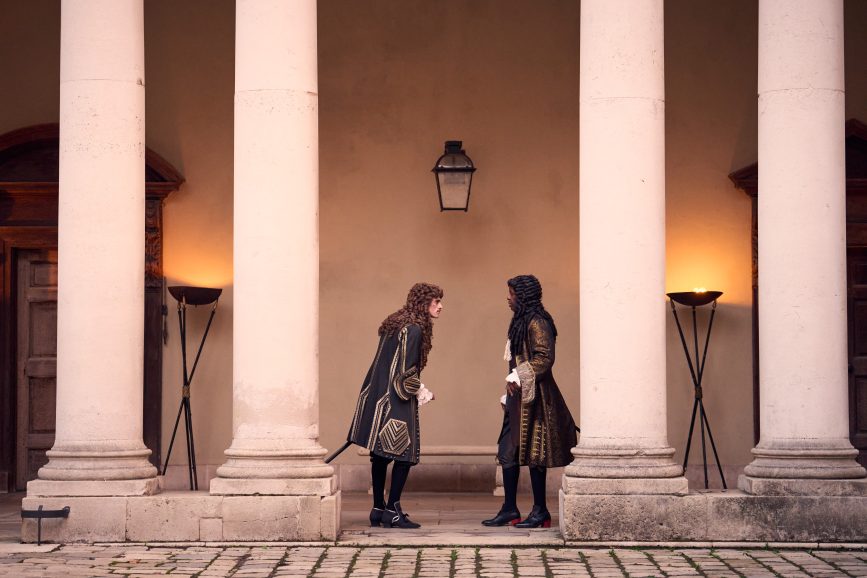
BC: What were the main cinematographic challenges of your episodes and how did you overcome them?
CG: We had a few big set pieces across our block, and some really wonderful visual opportunities. Episode three opens with the Widdicombe Manor fight quickly followed by the Carriage Chase. Episode four has the Plague Village as well as the Roxy (Nell’s sister) magic scene. And episode five has the Newgate Prison escape sequence. Both the Widdicombe Manor fight and the Newgate Prison escape had a large number of stunts, special effects and visual effects to coordinate, so that made them challenging on that level. But on a purely cinematographic level, I actually felt the ball was mostly in my court to sell the creepy atmosphere of the Plague Village, as well as the magic that Roxy discovers there. All of the magical effects are good old fashioned in-camera lighting cues and camera moves in conjunction with practical special effects. I loved reading this dialogue-less scene on the page, so it was a great joy for me to design the shots and the lighting to tell this visual story.
OR: One of the main challenges was shooting scenes which had Billy Blind in. This is because his coverage was to be shot on a VFX stage quite a bit of time after we had shot the actual scene. We would have to choreograph and storyboard his movements and what he was going to do in the scene beforehand so that we would know what lens to be on and how and where the camera was going to move.
Another of the challenges were the fight sequences. Again it took precision choreography from James Embree (fight choreographer), our director Ben and of course the amazing cast who would work tirelessly for weeks on a sequence. I would then look at the previs with Ben and work out angles, camera movement and where best to place the camera for the shot and for light. We would also have to factor in quite a lot of wire work within these sequences, so they were often storyboarded as a guide to help us plot our way through.
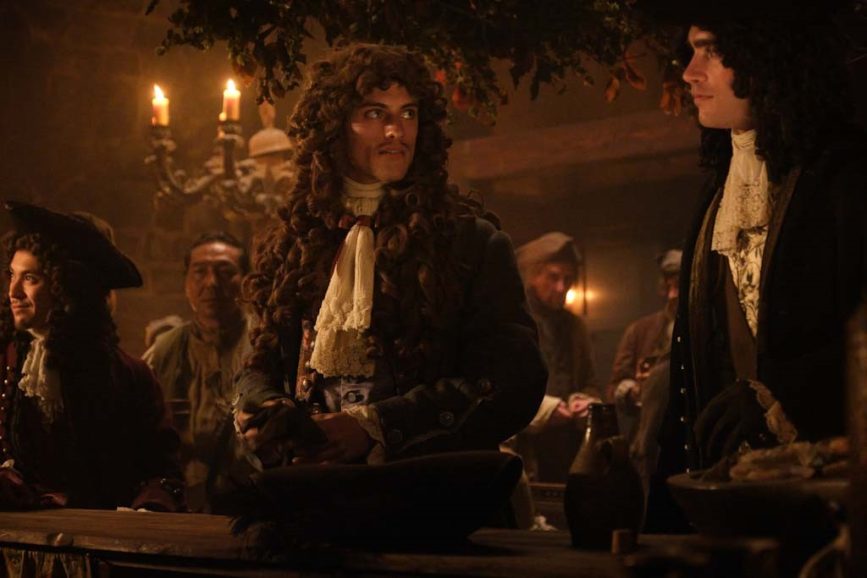
BC: What was your general approach to lighting? In particular, how did you use candlelight and natural light in your episodes?
OR: My general approach in terms of lighting firstly was to research and look at what the lighting of that period was. I quickly realised that it was daylight, moonlight and candlelight. I knew this would be a challenge but a fun challenge. It actually simplifies things in a certain way as it completely omits any contemporary light sources. I embraced it, and although I would have loved to try and only use real candlelight for night interiors, it just wouldn’t have been possible when shooting with multiple cameras for some of the scenes that we had. I tend to light quite naturally and with motivation. Some of the night scenes were tougher because moonlight in cinema is always a stretch, but often a necessary one. However I was pleased with where we ended up.
CG: My approach is always to light from motivated, real-world sources. In the case of Renegade Nell, this meant basically daylight, flame or moonlight. There were a few magical exceptions, but even in the case of magic – I need to understand where the light is coming from. Once I know where the light is supposed to be coming from, that then informs everything else: the colour, quality, intensity, etc.
BC: What was the most difficult location to light and how did you tackle it?
CG: Dover Castle was the most difficult (see above!), but the second most difficult is tricky to answer. We had a night scene shot on the first floor of a practical location with very low ceilings. Due to scheduling issues, this scene had to be shot day for night, and on one of the hottest days of the summer. I felt badly for the actors, but I had to light the fireplace and use real flame because that was the main motivation in the scene. They were such good sports about it, but it was a very sweaty affair!
OR: I would say one of the most difficult locations to light was the exterior Talbot pub at night. We were essentially lighting a small town/hamlet and we had a fairly substantial fight sequence to shoot outside the front of it over several nights. I wanted a soft cover of moonlight which was a 20×20 soft box containing 16 Creamsource Vortex 8s through a full and a half grid cloth with separation. This was hung on an extended arm from a 150-tonne Lee lifting crane. I also felt I needed a slightly harder backlight for shape. So for this we used six Nanlux Dyno 1200s on a 60-metre Lee lifting crane. Gaffer Sam Madden and I spent quite a lot of time planning and plotting how to achieve this setup and the logistics of where to place the machines where they wouldn’t be in shot during day scenes. It was also logistically hard to get these machines in and out of a tight location at Crowhurst. Needless to say that it all went well apart from a little lightning storm in the middle of the week.
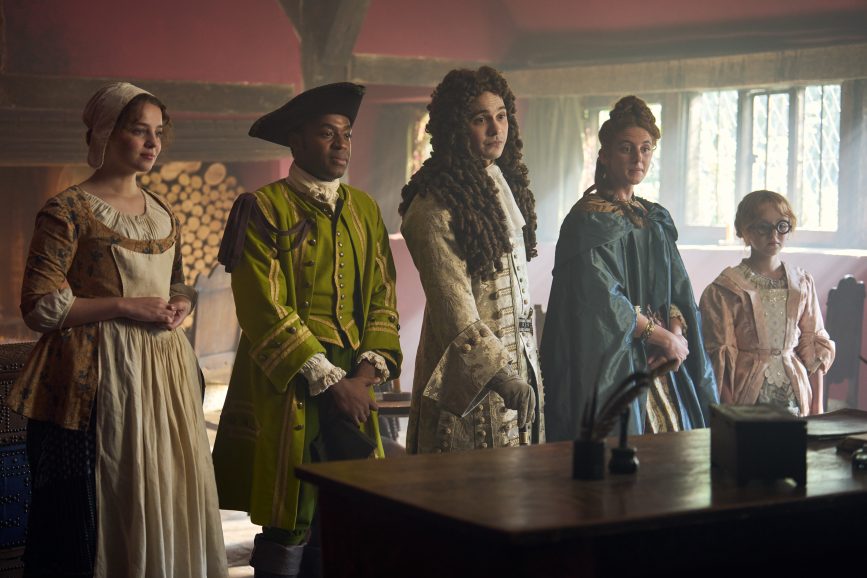
BC: Oli, how did you shoot the opening sequence in episode two with the carriage ride?
OR: This sequence involved a lot of planning and discussion. The initial idea came from our director Ben. He pitched to me that it should all be one shot, which not only did I agree with but I loved. The challenge was how to achieve it.
We knew already that we would be shooting the interior of the carriage on a stage at Ealing Studios and the exterior somewhere completely different. So with script in hand we set about designing the shot. Ben and I looked at the incredible one-shot inside a car from the film Children of Men carried out by Alfonso Cuarón and Emmanuel Lubezki (ASC AMC) and began to ponder something similar. However as we started to discuss the camera moving around inside the carriage to capture the dialogue we realised that the carriage was too small. So we came up with an idea to modify our carriage build so that as the camera is looking in one direction the seats and people behind the camera slide back to accommodate the space. As the camera then starts to move round they slide back in and the other side slides out. The camera then exits the carriage through the window and along the side exterior where we create a hidden cut. This was all shot on a Technocrane ran superbly by key grip Phill Heale and his team.
The hidden cut then hands over to an actual moving carriage on location, which we shot at Windsor Great Park. The location shoot was achieved by mounting a Technocrane on the back of a tracking vehicle and towing the carriage. We were then able to navigate the camera around the moving carriage to achieve the rest of the shot. The part where Nell jumps from a tree on to the top of the carriage was a VFX element shot on a stage. To create the illusion we had (stunt performer) Melissa Humler crouched and hidden behind the luggage on the roof so that she could appear on cue.
BC: Who did the grade and what look did you seek to achieve?
OR: The grade was carried out by Thomas Urbye at The Look whom Ben and I had worked with on season three of Sex Education. The look and feel was really to honour what we had already shot but also try and add a further quality to everyone’s work. Thomas had designed a three-strip film emulation which allows you to lean on different colour curves. It also added a natural grain which Ben and I really liked. The three strip was really useful for desaturating green for example when it’s overwhelming in woodland scenes. Or leaning on the blue for exterior night.
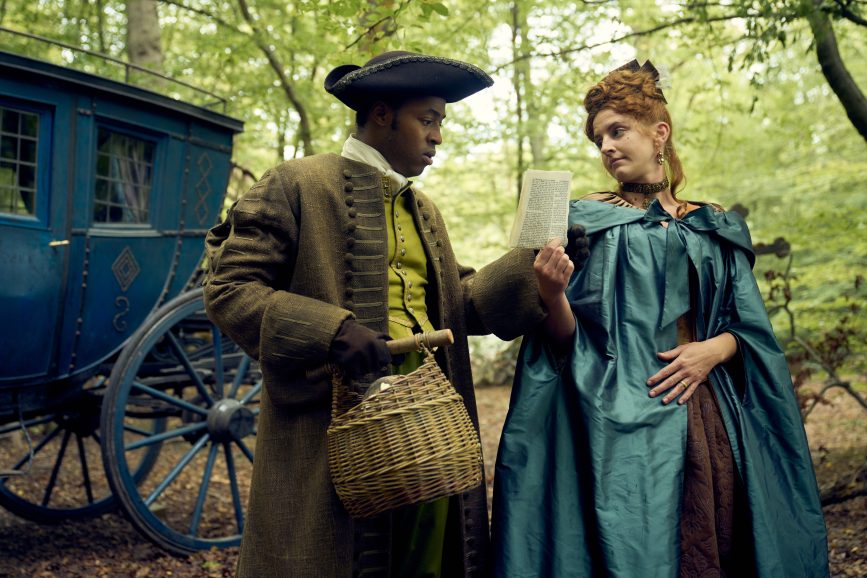
BC: What part of your work on Renegade Nell are you most proud of?
CG: There’s a lot going on across our three episodes, and the work is all so varied, which makes it hard to choose one scene over another. Most of our time in prep was spent on the big set pieces- the Widdicombe Manor fight, the Carriage Chase and the Newgate Prison escape. I am proud of all of these sequences because I can see the progression from script page to storyboard to shotlist to final product.
That said, however, sometimes it’s the smaller scenes which surprise you. I love the Roxy magic scene on the one hand, and on the other, I really love the scene where Sofia starts to come into her power as well. Those scenes both feature simple, elegant shot construction, and a careful and considered approach to framing and lighting, as well as some in-camera trickery for the magic.
OR: I am proud of all of my work on Renegade Nell. But if I had to pick one particular element, it would be the fight sequences. I hadn’t shot fight sequences on that level before. Often these sequences would be shot over several days and trying to maintain consistent lighting conditions was really challenging whilst staying on top of all the different sections and angles we needed to shoot.
BT: The pilot script had the gift of an incredible cold open, a big dizzying breathless fight sequence introducing us to Nell through action rather than dialogue. The design, choreography and shooting of this sequence was my highlight of the project. We collaborated with an incredible fight choreographer called James Embree who was entirely on our page for what the sequence needed. The balance of fun and playful, super-powered but not Marvel, and obviously as violent as we were allowed to push it.
It was the first time I’d worked with a full stunt team and pre-vis, so the entire sequence was shot, edited and signed off weeks before in an old warehouse. So when it came to the shoot we were studiously just ticking of James’s shots. We got lucky with the weather over four days and between Oli and Tom Walden ACO (our A-camera operator and Steadicam master) we captured some stunning stuff. We threw a lot at it – Steadicam, handheld, Ronin, Technocranes, wire work – whatever the shot required. We were led by James’ action rather than any self-conscious camera moves.
The finished sequence was everything I’d hoped for and I think sets out the stall well for the show before the title cards even come on screen.
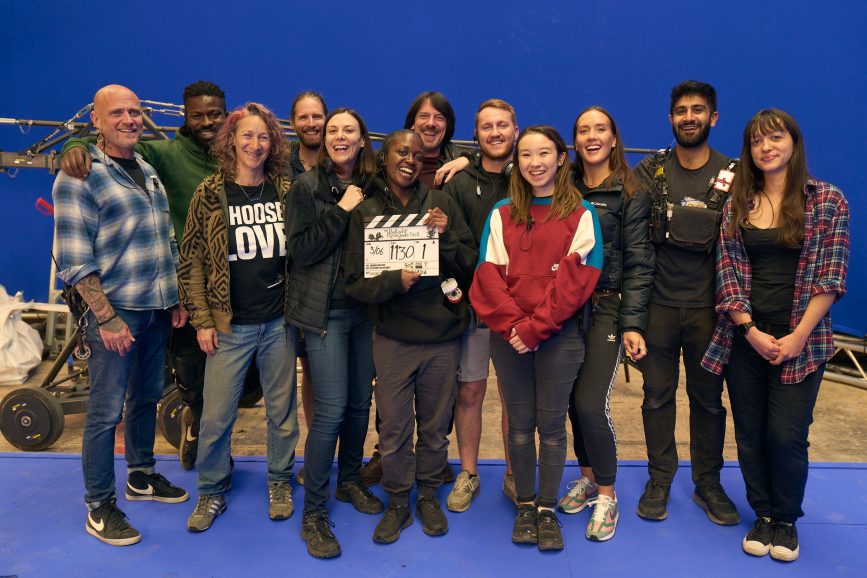
Are there any key crew members not yet mentioned that you’d like to highlight?
OR: I think I’ve mentioned most of the key crew members. However I would like to say thank you to Tom Walden (A-camera operator), Leon Hoser (A-camera focus), Kevin Williamson (B-camera focus), Lewis McInnes (on-set DIT), Sam Madden (gaffer), Terry Archer (best boy), Phill Heale (key grip) and all the other crew members who worked across various departments. It really was a huge team effort and a really enjoyable one at that.
CG: Oli put together an incredible team who were all very supportive. I’d love to highlight the operators: A-cam/Steadicam operator Tom Walden, who not only is a very talented operator technically- speaking, but also has a very keen sense of story. He is a great collaborator in every sense of the word. And I was able to bring in B-cam operator Gabi Norland, who is a DP in her own right. Gabi has a great eye, and a great patience for the B-cam role, always finding the last minute shot that fits in with what A-cam is doing. Gabi also graciously covered for me a couple times when I had to leave set, and I’m super grateful to her and the rest of the crew for having my back.
All eight episodes of Renegade Nell will be available to stream 29 March on Disney+ in the UK and Ireland.










